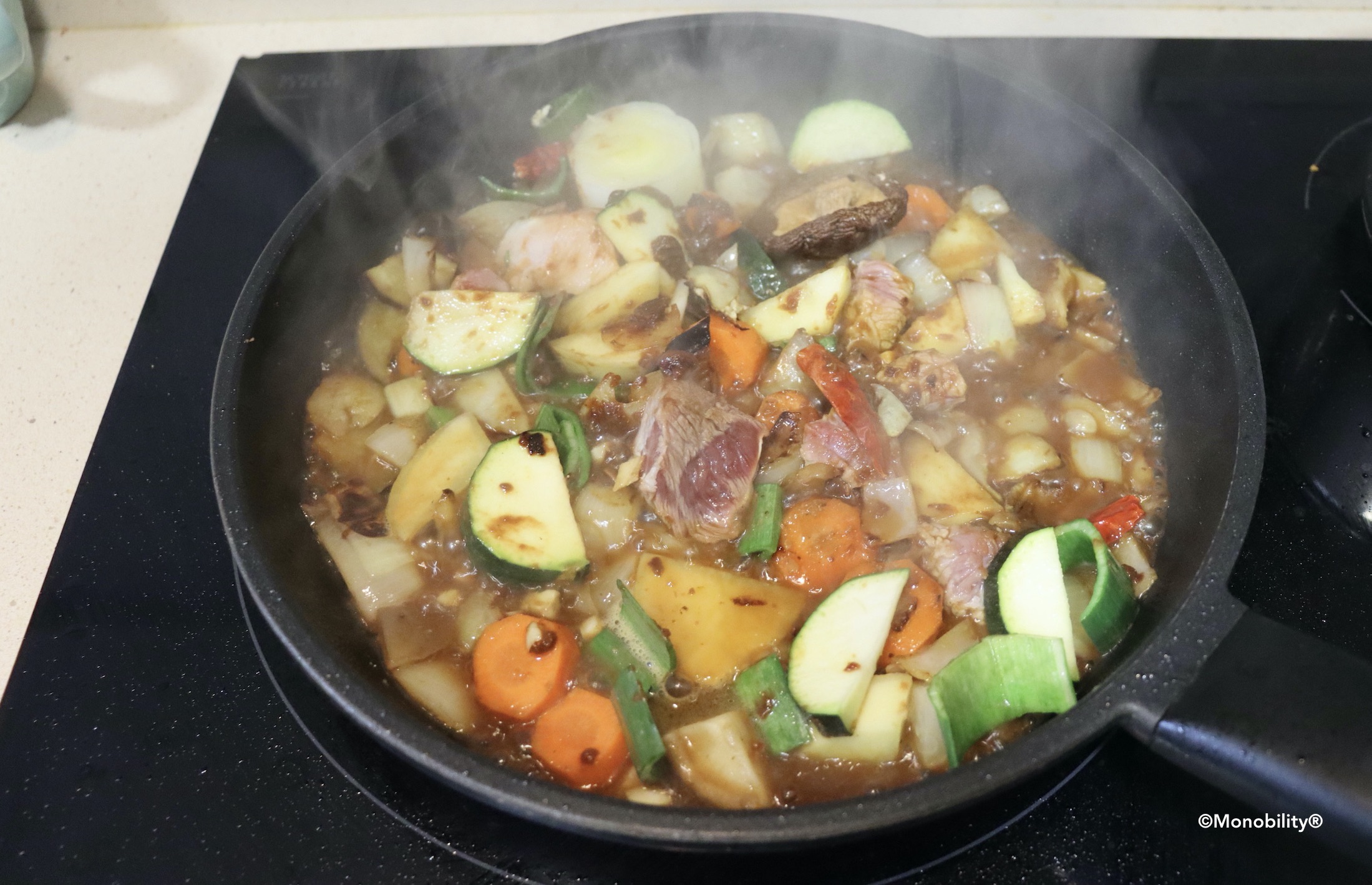Long ago, I got very curious about European cuisine. So curious that I decided to learn it from real professionals in Manhattan, in the evening after work three times a week. The first thing I learned about French cooking was “ciseler un oignon (chop an onion into very small cubes)”. Practicing the delicate technique together with my classmates (aspiring chefs from everywhere in the world), I was thinking to myself, “Wow, the French have such a great culinary tradition that their language even has a special word for ‘fine chop’—ciseler. How amazing!”
Many years have passed since then, and now I realize that ciseler means nothing but “to chisel,” etymologically the closest cousin word in English. To my regret, I also forgot most of the elaborate and inventive French cooking techniques I learned from the cooking school in New York, and my onions are not “chiseled” any more… Gastronomically speaking, both my heart and my stomach have been hollow and tired enough to give up on cooking for other souls than for myself during the last couple of years. Well, only until I recently found my “epiphany” moment watching a hilariously inspiring scene in 환혼 (Alchemy of Souls, 2022), where the baby-faced beauty 정소민 chides an equally baby-faced singer/songwriter/actor 황민현 for his clumsy cooking knife skill. In the funny scene that lasts less than a minute, the two utterly talented stars utter a funny Korean mimetic adverb 숭덩숭덩 six times in a row. As most Korean mimetic words are repeated within themselves, 숭덩 is actually repeated 12 times! ^^
To Koreans’ ear, 숭덩 is the sound of something chunky being chopped off with a knife. Mostly the word applies to cooking ingredients, but it can be a body part such as your finger, if you’re not careful with your knife. When 숭덩 is repeated once, 숭덩숭덩 describes the cooking technique that corresponds to “cut/chop into chunks,” “into big pieces.”
- 대파는 숭덩숭덩 써세요. Please cut the leeks into chunks.
- 고기는 숭덩숭덩 썰어야 맛이 좋아요. The meat tastes better when it’s chopped into chunks.
Its antonym, the opposite Korean word that means “fine chopping” (close to, but not exactly, French “ciseler”) would be 자잘자잘, which is not as popular as 숭덩숭덩, probably because of the typical Korean palate that prefers ingredients’ natural juices and flavors coming out of bigger chunks, like a good-sized chunk of leek in a stew.
Voilà, Koreans also have special words dedicated to cooking techniques! That is exactly what I can say to myself and to you for now, like a boy playing on the seashore, and then finding a smoother pebble or a prettier shell than ordinary. As I find or remember more such pebbles in the future, I will be sure to write about them for you.
아이 참 그, 대파는 숭덩숭덩 썰라고 혔잖유*
Hey, I told you to cut the leeks into chunks
이 정도?
This big?
아니, 숭덩숭덩 뜻 몰러유*? 숭덩숭덩?
No, don’t you know what “chunk” means? Chunks?
숭덩, 숭덩…
Chunk, chunk…
아니유*, 이건 자잘자잘이잖뉴*
No, that’s fine chop!
이? 숭덩, 숭덩이라니께유*
Into chunks, chunks!
아니, 그 정확한 길이를 얘기해 줘야지,
You should tell me exact lengths,
숭덩숭덩이라고 애매하게 말하면 내가 어떻게 아냐?
How would I know that if you just say vaguely “chunks”?
– 환혼 (Alchemy of Souls, 2022), Ep. 6
In all 20 episodes of Alchemy of Souls, 정소민 speaks in two different accents alternatingly, switching between each other, depending on whom she speaks to: one in standard Seoul accent, and the other in a distinct dialect of 충청 (Chungcheong) province, which is in the middle of South Korea. Please see my “translation” of the dialect into the standard Korean form below:
- 숭덩숭덩 썰라고 혔잖유* [Chungcheong Dialect] = 숭덩숭덩 썰라고 했잖아요 [Standard Korean]
- 몰러유*? [Chungcheong Dialect] = 몰라요? [Standard Korean]
- 아니유* [Chungcheong Dialect] = 아뇨 / 아니요 [Standard Korean]
- 자잘자잘이잖뉴* [Chungcheong Dialect] = 자잘자잘이잖아요 [Standard Korean]
- 숭덩이라니께유* [Chungcheong Dialect] = 숭덩이라니까요 [Standard Korean]
I have watched many dramas so far, but not many Korean actors can switch back and forth like 정소민 did in Alchemy. What a wonderful linguistic talent! Such a great accomplishment as a performing artist.
P.S.> Delighted by the epiphanic verbal rediscovery, I chopped onions and leeks and beef rib meat and other veggies into chunks 숭덩숭덩, and quickly cooked my version of 된장찌개 (Soybean paste stew). It is arguably the most popular Korean soul food after 김치 (Kimchi), made of uniquely Korean main ingredient 된장 (Fermented soybean paste). To understand how soulful this food is for Koreans, you can watch 2010 movie “The Recipe (된장),” where 이요원 with her queenly charm leads you through this mouth-watering mystery/romance/comedy about the two millennia old Korean traditional ingredient 된장 and the joy of cooking and gastronomy, which Koreans take so seriously. Here is my tip: the key to making an excellent 된장찌개 is to “roast” 된장 on the heated pan together with the veggies for a couple of minutes before you pour the water, as my in situ cooking pictures show!








